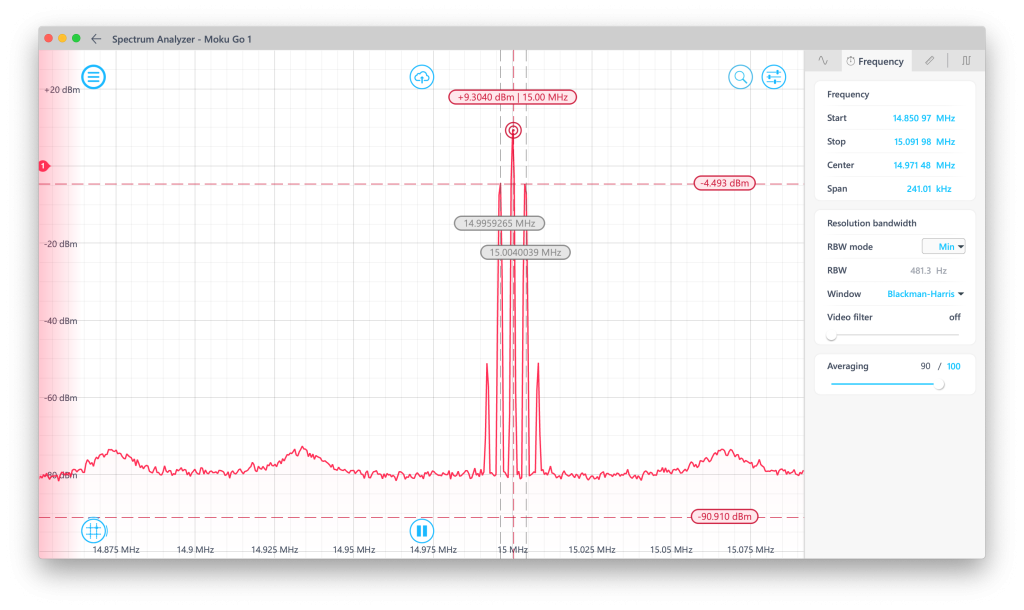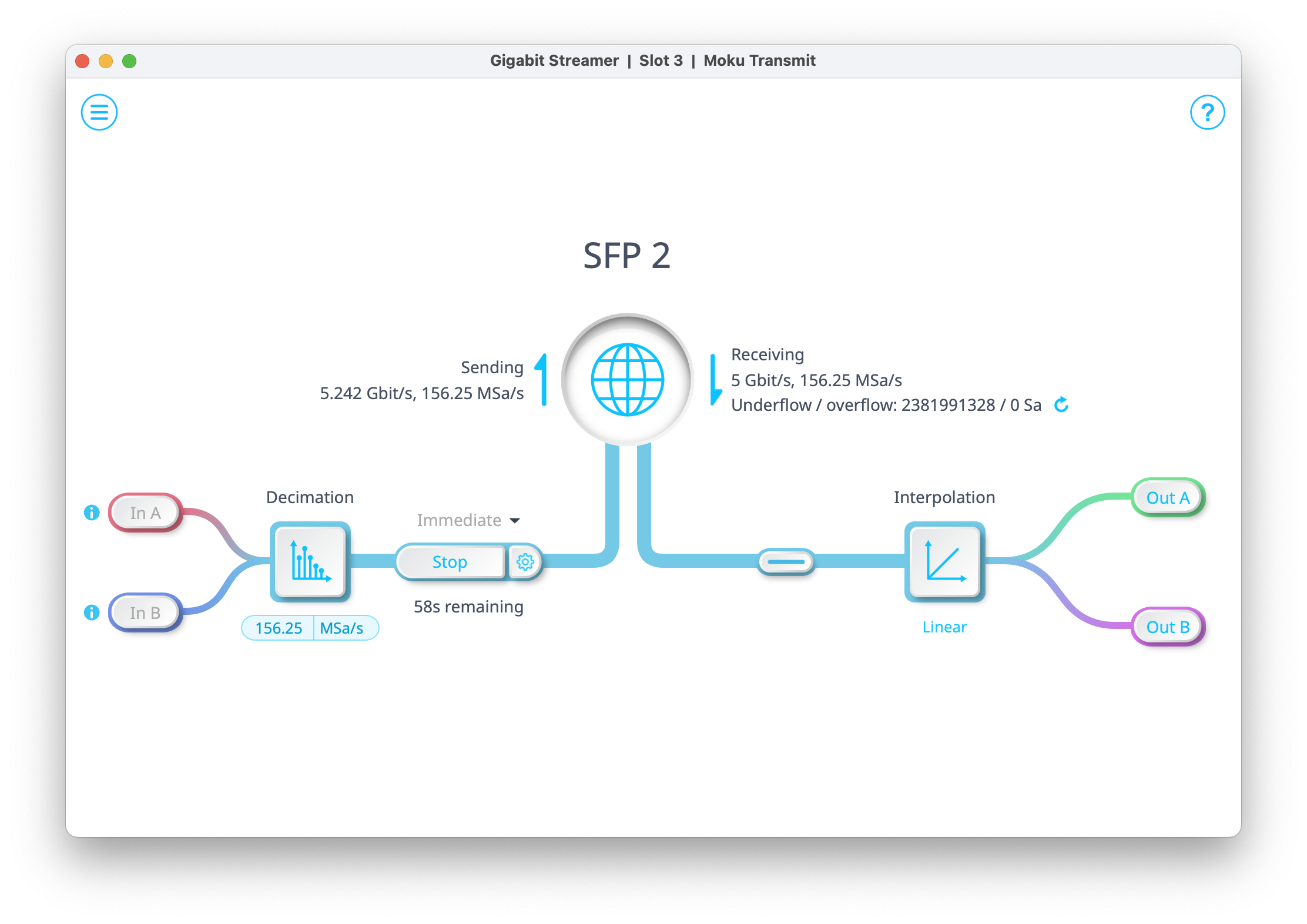Moku:Go combines 15+ lab instruments in one high-performance device. This application note discusses Moku:Go’s Spectrum Analyzer and Waveform Generator and the advantages of a hybrid, swept signal spectrum analyzer.
Moku:Go
 Moku:Go combines 15+ lab instruments in one high performance device complete with integrated power supplies. In this application note, we discuss the benefits of a high-performance swept spectrum analyzer and its use in an educational lab to investigate Amplitude Modulated (A.M.) signals.
Moku:Go combines 15+ lab instruments in one high performance device complete with integrated power supplies. In this application note, we discuss the benefits of a high-performance swept spectrum analyzer and its use in an educational lab to investigate Amplitude Modulated (A.M.) signals.
Spectrum Analyzers
Spectrum analyzers are essential for test & measurement instruments in any electrical engineering lab. They are used to display and analyze signals in the frequency domain. Compared to the Fast Fourier Transform (FFT) function available in some oscilloscopes, frequency swept spectrum analyzers typically provide better spectral resolution while maintaining a large frequency span. However, conventional spectrum analyzers can be much slower than the FFT based approach especially at a finer resolution. Moku:Go’s Spectrum Analyzer instrument uses a hybrid technique, which delivers the advantages of both approaches and balances the speed and frequency resolution. In this guide, we will use Moku:Go’s Spectrum Analyzer to investigate an A.M. signal and take advantage of the available frequency range and resolution bandwidth to examine the sidebands.
Generating A.M. signal
An amplitude modulated signal consists of the carrier plus a modulating signal. In this application note we have chosen a carrier of 15 MHz, modulated by a signal of 4 kHz. These figures are a reasonable example of an A.M. radio carrier carrying a signal in the audio bandwidth.


Figure 1: Moku:Go’s Waveform generator, 15 MHz carrier with 4 kHz modulation
An A.M. signal will have a large carrier component together with sidebands; the bandwidth of the sidebands will correspond to the bandwidth of the modulating signal, so in our example we expect to see a carrier at 15 MHz and sidebands at 14.996 MHz and 15.004 MHz. An FFT-based spectrum analyzer, while fast, would likely not be able to resolve these fine 4 kHz details at the carrier frequency. Thus, it would not be possible to hold a meaningful lab investigating amplitude modulation.


Figure 2: Moku:Go’s Spectrum Analyzer revealing fine details of sidebands
Figure 2 shows Moku:Go’s hybrid Spectrum Analyzer in operation. Because it implements a frequency mixer on Moku:Go’s high-performance FPGA, combined with an FFT we can observe the sidebands, offset by 4 kHz. The minimum resolution bandwidth (“RBW”) indicated is 481.3 Hz.
In a lab environment, we can then direct students to modify the modulating signal, observe the position of the sideband, and relate this to their theory lectures. Further, Moku:Go’s Waveform Generator can modulate the carrier by a signal on one of its analog inputs. Thus, we could supply a music or voice recording into a second Moku:Go’s Waveform Generator and observe the bandwidth of the sidebands that result.
Benefits of Moku:Go
For the educator & lab assistants
- Efficient use of lab space and time
- Ease of consistent instrument configuration
- Focus on the electronics, not the instrument setup
- Maximize lab teaching assistant time
- Individual labs, individual learning
- Simplified evaluation and grading via screenshots
For the student
- Individual labs at their own pace enhance the understanding and retention
- Portable, choose pace, place and time for lab work be it home, on campus lab or even collaborate remotely
- Familiar Windows or macOS laptop environment, yet with professional-grade instruments
Moku:Go demo mode
You can download the Moku:Go app for macOS and Windows. The demo mode operates without the need for any hardware and provides a great overview of using Moku:Go
Have questions or want a printable version?
Please contact us at support@liquidinstruments.com






